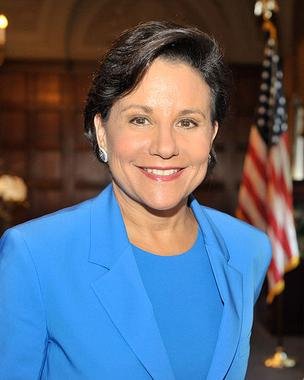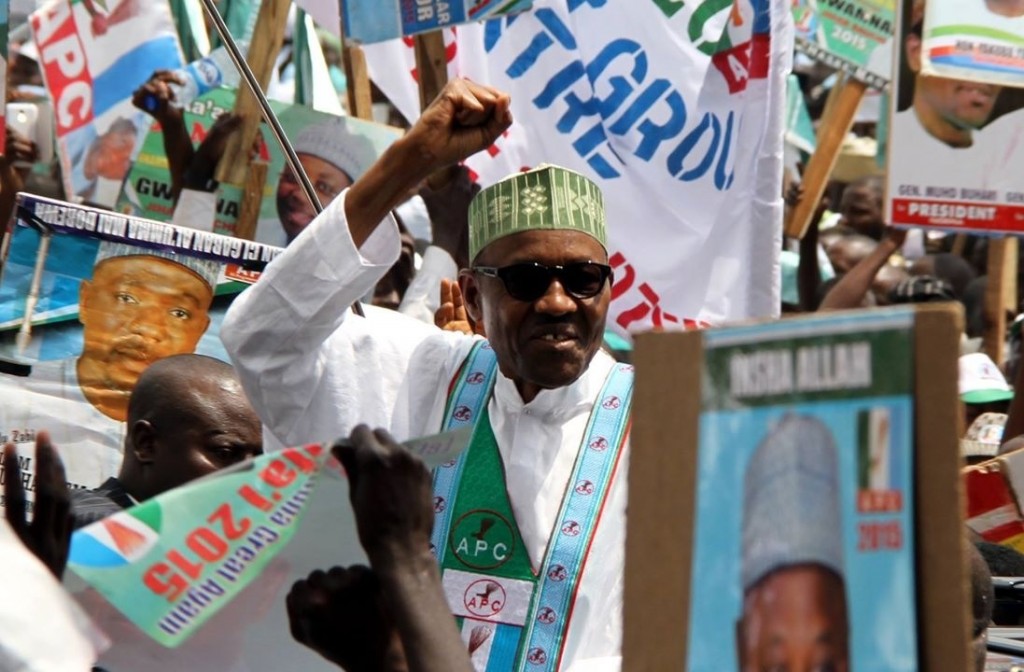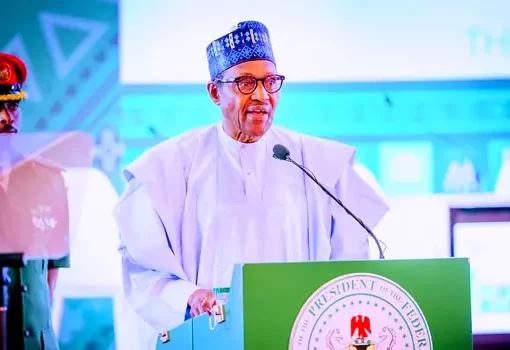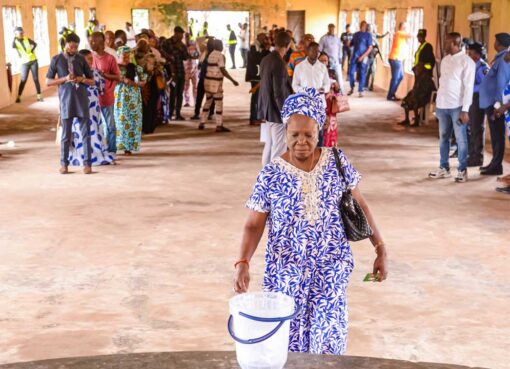By U.S. Department of Commerce and Communications
The United States and India share a strong and growing commercial and economic relationship, driven by entrepreneurs and businesses in both countries.
In January, President Obama and Prime Minister Modi decided to elevate the bilateral commercial and economic partnership by establishing the first-ever U.S.-India Strategic and Commercial Dialogue (S&CD) which was held today in Washington, DC.
The S&CD is the signature, annual forum for policy discussions between the United States Government and the Government of India.
The United States and Indian Governments are using this vehicle to advance our shared priorities of generating economic growth, creating jobs, and strengthening the middle class.

U.S. Secretary of State John Kerry and U.S. Secretary of Commerce Penny Pritzker co-chaired the dialogue with their Indian counterparts, Minister of External Affairs Sushma Swaraj and Minister of Commerce and Industry Nirmala Sitharaman.
The S&CD reflects the Obama Administration’s commitment to strengthen the economic engagement that lies at the center of our bilateral relationship.
This engagement, which includes business, education, cultural, familial and people-to-people ties, has always been at the leading edge of the U.S.-India partnership, and continues to expand.
Our bilateral trade has grown from $19 billion in 2000 to over $100 billion in 2014. U.S. exports to India totaled $38 billion last year, supporting an estimated 181,000 U.S. jobs.
Cumulative Indian foreign direct investment in the United States totaled $7.8 billion in 2014; U.S. foreign direct investment into India was $28 billion.
Ongoing government actions to facilitate trade in both directions and open new sectors to private investment will continue to accelerate not only economic growth and development, but also increase prosperity for the citizens of both our countries.
Below are key highlights of progress since the 2014 U.S.-India Strategic Dialogue:
Commercial, Trade, and Investment Partnerships
U.S.-India CEO Forum (CEO Forum): The reconstituted and expanded CEO Forum, which has been directly linked to the S&CD, met on September 21, 2015. The U.S. and Indian CEOs engaged in a substantive conversation about immediate policies that can encourage greater trade and investment, as well as the longer term path to greater strategic economic collaboration.
The CEO Forum presented their recommendations to United States and Indian government officials at the S&CD and a portion of the subsequent government-to-government conversation was dedicated to reviewing the CEO Forum’s recommendations.
The CEO Forum offered suggestions in key areas such as business climate, smart cities and infrastructure financing, supply chain integration (including cold chain), aerospace/defense, and renewable energy among other topics.
Commercial Dialogue: The United States Department of Commerce and the Indian Ministry of Commerce and Industry held their annual Commercial Dialogue in New Delhi on August 12, 2015 on how to enhance our respective, government-led investment promotion efforts.
This public-private session featured senior U.S. and Indian officials and participants from the U.S. and Indian private sectors, including the American Chamber of Commerce (India), the U.S.-India Business Council, and the Federation of Indian Chambers of Commerce and Industry.
Trade Policy Forum: The Trade Policy Forum (TPF) enables the United States and India to engage on a wide range of policy issues impacting bilateral trade and investment.
As outlined in the November 2014 TPF joint statement, both governments committed to expert-level and senior official discussions on trade and investment policy issues of interest to the two countries, to include intellectual property, manufacturing, services, and agriculture.
Multiple engagements in 2015 have helped advance cooperation on bilateral trade objectives, with the goal of achieving substantive results.
Trade Facilitation Agreement: India has agreed to ratify the WTO’s Trade Facilitation Agreement (TFA) and has acknowledged the benefits its provisions would have not only for Indian exporters, but for importers as well.
The United States and India continue to communicate on specific matters related to international trade to better understand our respective policies and procedures, and will seek ways to improve our processes.
Bilateral Investment Treaty: The United States and India held the most recent round of discussions toward a high-standard bilateral investment treaty (BIT) in March 2015.
A high-standard BIT would deepen the bilateral economic relationship and support economic growth and job creation in both countries. We plan to continue discussions to assess the prospects for a high standard BIT.
Ease of Doing Business: The United States and India launched a joint work stream on the Ease of Doing Business to focus on a number of issues that would increase bilateral trade.
Initially, the teams have focused on a commercial law initiative to exchange best practices on matters like contract enforcement, insolvency and bankruptcy law, and cross border trade, including non-tariff barriers.
The United States Department of Commerce has already engaged extensively on commercial issues with counterparts in India, including by conducting a judicial exchange focused on bankruptcy practice and consulting with experts in India as revisions to India’s bankruptcy laws are considered.
We plan to engage consistently and regularly in the next year on these issues to improve the respective business climates for increased trade between the countries.
Collaboration on Cluster Mapping: Today, the United States Department of Commerce and the Indian Ministry of Commerce and Industry have agreed to support the efforts of the Harvard Business School and the Indian Institute of Management Ahmedabad to develop a cluster map.
This tool will help Indian companies integrate into global supply chains, strengthen India’s economy and better enable American companies to identify markets for their products and services in India.
Cluster mapping will help U.S. and Indian decision-makers develop more effective, evidence-based commercial linkages that will drive economic growth and development and enhance two-way trade and investment.
Launching An Innovation Forum: The United States and India will launch a private sector-led Innovation Forum, which will serve as an additional avenue through which our governments seek private sector feedback and input for bilateral discussions.
The Forum will consider a set of rotating topics to ignite and scale innovation, increase related two-way investment and trade, support the advancement of small and medium-sized enterprises (SMEs), and identify where specific skill sets are needed to propel innovation forward.
The Center for Strategic and International Studies will serve as a convener of the annual Innovation Forum, and will be supported by a steering committee comprised of organizations from both countries.
The Innovation Forum will be memorialized in a broader Memorandum of Understanding related to innovation and entrepreneurship between the United States and Indian governments.
Product and Reference Standards Cooperation: The United States and India are working together to participate in the development of international standards and technical regulations to boost trade and help reduce administrative and logistical burdens, which disproportionately affect small and medium sized enterprises.
The United States and India will engage their respective industries to identify sectors where standards and conformity assessment-focused cooperative dialogues could lead to mutual benefit and increased trade.
To support the removal of barriers that impact the global supply chain, the United States and India will exchange best practices for the operation of national Enquiry Points under the World Trade Organization Agreement on Technical Barriers to Trade and will explore opportunities for more cooperation on reference standards between India’s National Physical Laboratories (NPL) and the National Institute of Standards and Technology (NIST).
The United States and India announced a private sector-led collaboration to update a bilateral standards portal, which facilitates the sharing of information to improve industry understanding of market access requirements in both countries.
Strengthening Best Practices in Manufacturing: The United States Department of Commerce’s National Institute of Standards and Technology’s Manufacturing Extension Partnership (NIST-MEP) will share best practices in manufacturing and supply chain integration.
The NIST-MEP invited senior Indian officials to visit the main NIST site in Gaithersburg, Maryland this October.
Investment Promotion: The U.S. Department of Commerce’s SelectUSA initiative and the Silicon Valley chapter of The Indus Entrepreneurs (TiE) signed a memorandum of intent on September 18 to work together to provide Indian entrepreneurs the data and assistance they need to facilitate their expansion into the United States.
The U.S. Department of Commerce also expressed appreciation to the delegation that participated in the successful 2015 SelectUSA Summit, which drew close to 80 Indian investors.
India is a target market for SelectUSA, and SelectUSA officials are continuing to work with Indian industry associations to recruit for the 2016 SelectUSA Investment Summit.
SelectUSA will lead the first-ever “India Road Show” to New Delhi, Mumbai, Chennai, and Kolkata on October 13-16, 2015 in order to offer U.S. state, local, and regional economic development organizations the opportunity to directly market their locations to potential investors throughout India.
Participation in the Americas Competitiveness Exchange (ACE) for Innovation and Entrepreneurship: The United States has invited the Government of India to participate in the United States Department of Commerce’s ACE program.
Through ACE, senior Indian commercial and economic decision-makers have the ideal opportunity to establish long-term global and regional partnerships and to see the results of economic development initiatives in the Americas that are strengthening innovation and entrepreneurship ecosystems.
Information and Communication Technology Working Group: The United States and India held the first meeting of the U.S. – India Information and Communication Technology Working Group where the U.S. put forth a draft work plan to facilitate collaboration and development in support of Prime Minister Modi’s “Digital India” initiative.
US-India Memorandum of Understanding on Agriculture: The United States Department of Agriculture (USDA) and the Indian Ministry of Agriculture plan to renew their now-expired Memorandum of Understanding (MOU).
The scope of the renewed MOU will be expanded to facilitate engagement on a broader and more inclusive range of topics than its predecessor.
US-India Agricultural Dialogue: The governments of India and the United States are evaluating the possibility for renewal of the Agricultural Dialogue.
A reinvigorated Dialogue would include the broad scope of food and agricultural regulatory and policy setting agencies, and provide a mechanism for identifying shared opportunities and areas for cooperation.
Infrastructure and Smart Cities Collaboration
Smart Cities Infrastructure Business Development Mission: The United States Department of Commerce’s Deputy Secretary will lead a Trade Mission to further smart cities development in India, introduce U.S. technologies and solutions to boost the energy efficiency of India’s infrastructure, and support efforts to build the commercial relationship in sectors that contribute to shared environmental objectives.
In advance of this mission, the Deputy Secretary of Commerce co-hosted an event with the Federation of Indian Chambers of Commerce and Industry and 32 Advisors on September 21 to foster collaboration between Indian and US businesses on specific infrastructure and smart cities opportunities.
The Trade Mission will include visits to New Delhi, Mumbai, and Chennai, and is scheduled to take place on February 8-12, 2016.
Indian Smart Cities Participation in NIST Global Cities Teams Challenge 2.0: The United States invited the Government of India to participate in the next round of the Global City Teams Challenge (GCTC) organized by the United States Department of Commerce’s U.S. National Institute of Standards and Technology (NIST).
The next round’s objective is to encourage deployment of technologies to show measurable quality-of-life improvements.
The Challenge facilitates partnerships among: city and community planners and project managers to identify common issues, share solutions, and design new approaches; technology innovators and providers to integrate technologies and create standards-based platforms suitable for use across sectors such as energy, the environment, transportation, resilience, and health care; and scientists, engineers, and technologists to translate the results of smart city R&D into practice. Participants in the Challenge will also work together with other international counterparts in developing a smart city framework and standards and technology roadmaps for interoperability.
The U.S.-India Infrastructure Collaboration Platform (ICP): The ICP is a cooperative, interagency effort between the United States and the Government of India, anchored by the United States Department of Commerce and the Indian Ministry of Finance and operated in concert with our two private sectors, to promote U.S. private sector engagement in India’s infrastructure growth and modernization.
This effort develops business opportunities by matching unique U.S. company capabilities with India’s specific infrastructure needs, in areas such as power, transportation, water and sanitation, safety and security, and health care. The ICP was launched at a January meeting in Delhi. A second meeting took place in July 2015.
Invitation for Smart Cities Comprehensive Economic Development Strategy (CEDS) Program: The United States invited the Government of India to participate in the CEDS program, administered through the United States Department of Commerce’s Economic Development Administration.
This program would initiate a regionally-owned planning process in India designed to build capacity and guide economic prosperity and resilience related to smart city and other projects.
And it would provide a coordinating mechanism for individuals, organizations, clusters, local governments, and private industry.
Smart Solutions for Smart Cities Reverse Trade Mission: To further the partnership between the United States and India on smart cities development, the U.S. Trade and Development Agency (USTDA) has invited a delegation of Andhra Pradesh and central government officials to the United States for a Smart Solutions for Smart Cities Reverse Trade Mission later this year.
The visit will introduce the delegates to U.S. technologies, solutions and best practices that can support the development of safe, efficient and integrated energy, transportation and communications urban infrastructure.
Technical Advisory Services for Smart City Development: The U.S. Trade and Development Agency (USTDA) approved funding for technical specialty services to support smart city development in India.
USTDA-funded experts in the fields of integrated urban and regional planning, as well as in energy, transportation and information communications technology infrastructure, will travel to India to provide advice and support to key stakeholders in advancing smart city planning and infrastructure development. The specialists will also identify and evaluate smart city project opportunities in India for USTDA funding consideration.
Increased Collaboration on Cold Chain and Supply Chain: The Public-Private Senior Executive Cold-Chain Roundtable will be held in New Delhi in November 2015.
The event will coincide with a large trade show in Chandigarh, India being organized by the Global Cold Chain Association, a major U.S. trade association that represents cold chain equipment and supply chain management providers.
Roundtable topics will include adopting operational best practices for cold chain storage and supply chain management processes; applying transportation and inventory management technology; and creating a more attractive environment for investment.
Indo-Pacific Economic Corridor (IPEC) Strategy: Complementing India’s Enhanced Look East Policy, the United States envisions an Indo-Pacific Economic Corridor that can help bridge South and Southeast Asia – where the Indian and Pacific Oceans converge and where trade has thrived for centuries.
Fostering these types of connections – physical infrastructure, regulatory trade architecture, and human and digital connectivity – will create linkages all the way from Central Asia to Southeast Asia, via South Asia.
A more integrated South Asia where markets, economies, and people connect is more likely to thrive and prosper. The United States is firmly committed to the security and prosperity of the Asian continent, and better connectivity, energy security, and stronger trade and investment links can help realize that objective.
During the January 2015 visit, President Obama and Prime Minister Modi pledged to work together to increase connectivity across the Indian Ocean and Asia-Pacific Regions. IPEC operationalizes this commitment, and the United States looks forward to implementing programs that support these objectives.
South Asia Regional Energy Law Cooperation: The U.S. Department of Commerce’s Commercial Law Development Program will partner with the Indian government to strengthen India’s insolvency and procurement regimes and develop model contracts.
This exchange is aimed at cultivating the investment regime in South Asia to attract more domestic, regional, and international capital for domestic and cross-border power projects.
These activities fall under the broader U.S. State Department Indo-Pacific Economic Corridor initiative to promote increased regional energy connectivity and contribute to the future development of a regional energy market in South Asia through cooperation, capacity building, and technical assistance.
Transportation Cooperation
U.S.-India Transportation Partnership: The Department of Transportation and the Indian Ministry of Road Transport and Highways, and Shipping in April 2015 established the U.S.-India Transportation Partnership.
Comprised of the U.S. Department of Transportation and the Indian Ministry of Road Transport and Highways, Shipping, and the Railways Ministry, the Transportation Partnership guides collaboration across a broad range of transport topics identified by a Joint Working Group.
The inaugural meeting of the Joint Working Group is set to take place in October 2015 in Washington, D.C. Potential topics for the meeting include the transport elements of Smart Cities, Intelligent Transportation Systems, best practices for planning and funding transportation infrastructure projects, regional connectivity, and other areas of mutual interest.
Fifth U.S.-India Aviation Summit: The U.S. Trade and Development Agency (USTDA) and Government of India will jointly host the 5th U.S.-India Aviation Summit from November 3-5, 2015 in Bangalore, India. The Summit will build upon successful collaboration under the U.S.-India Aviation Cooperation Program (ACP) by offering high-level government and business aviation leaders the opportunity to set bilateral priorities, identify new high technology cooperation areas and build a larger commercial engagement agenda.
Aviation Security Equipment Testing and Evaluation Program: Supporting the two countries’ interest to increase collaboration in the critical aviation security arena, the United States Trade and Development Agency (USTDA) is funding the first aviation security cooperation project under the U.S.-India Aviation Cooperation Program (ACP).
The technical assistance effort, also supported by the U.S. Transportation Security Administration (TSA) and three member companies of the ACP, is designed to assist the Airports Authority of India (AAI) and India’s Bureau of Civil Aviation Security (BCAS) to establish an Aviation Security Equipment Testing and Evaluation Program (ASETEP) to modernize India’s aviation security environment in alignment with international standards and practices.
The TA program will help India’s civil aviation security authorities to develop clear standards for state-of-the-art aviation security equipment as well as build the technical capacity to test and certify needed systems that scan carry-on luggage, checked baggage and passengers. Under the program a delegation of Indian security officials will visit TSA testing labs in the U.S.
Advanced Passenger Screening Pilot Project: Working with U.S. industry, the U.S. Trade and Development Agency (USTDA) is sponsoring a pilot project to demonstrate the benefits of using advanced U.S. airport passenger screening equipment at Delhi International Airport.
Rail Sector Development: The U.S. Trade and Development Agency (USTDA) approved funding to support a leasing and public private partnership framework technical assistance project with India’s Ministry of Railways.
The project will advise the Ministry on how to modify its financing, procurement and operational policies for locomotives and other rail infrastructure projects, in order to mobilize private sector investment for the modernization of India’s rail infrastructure.





